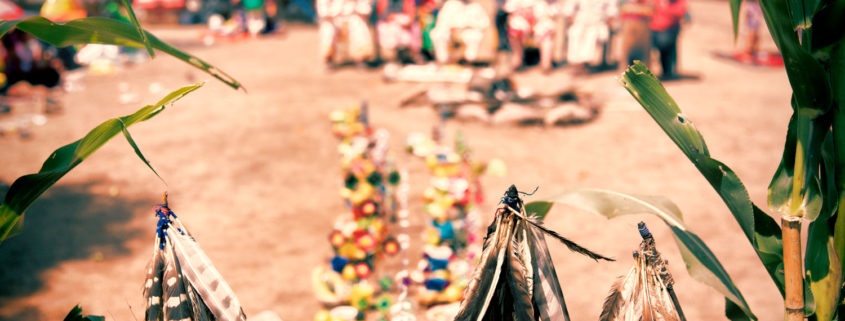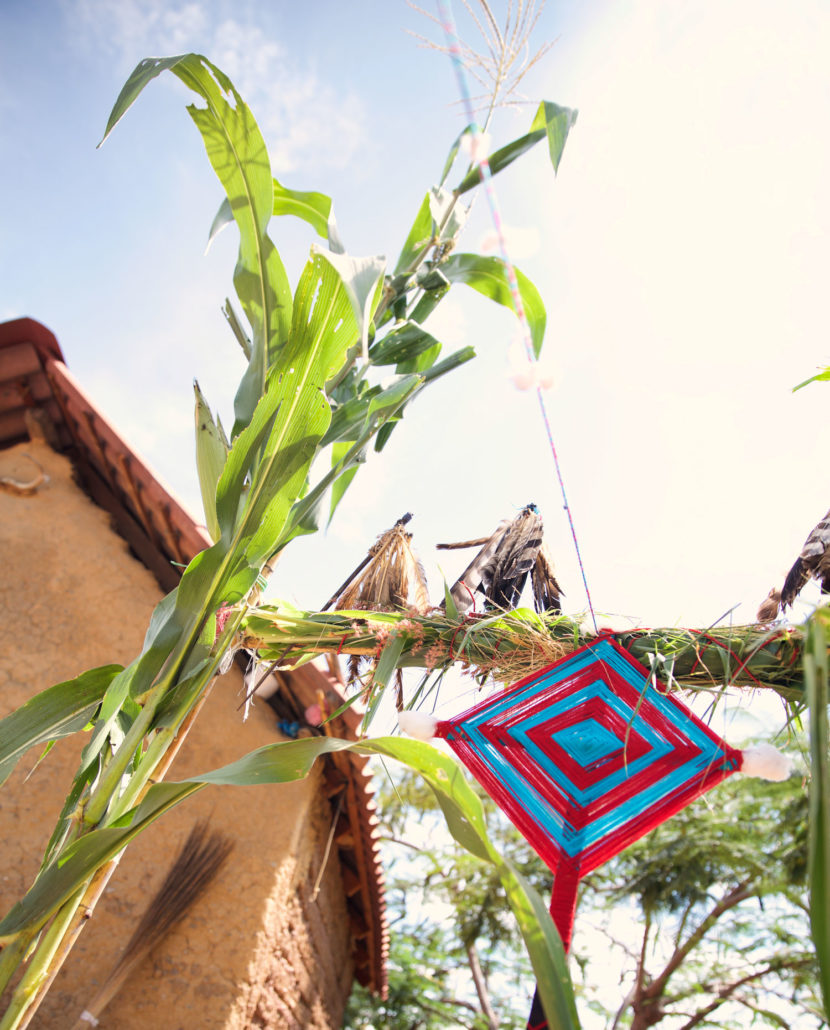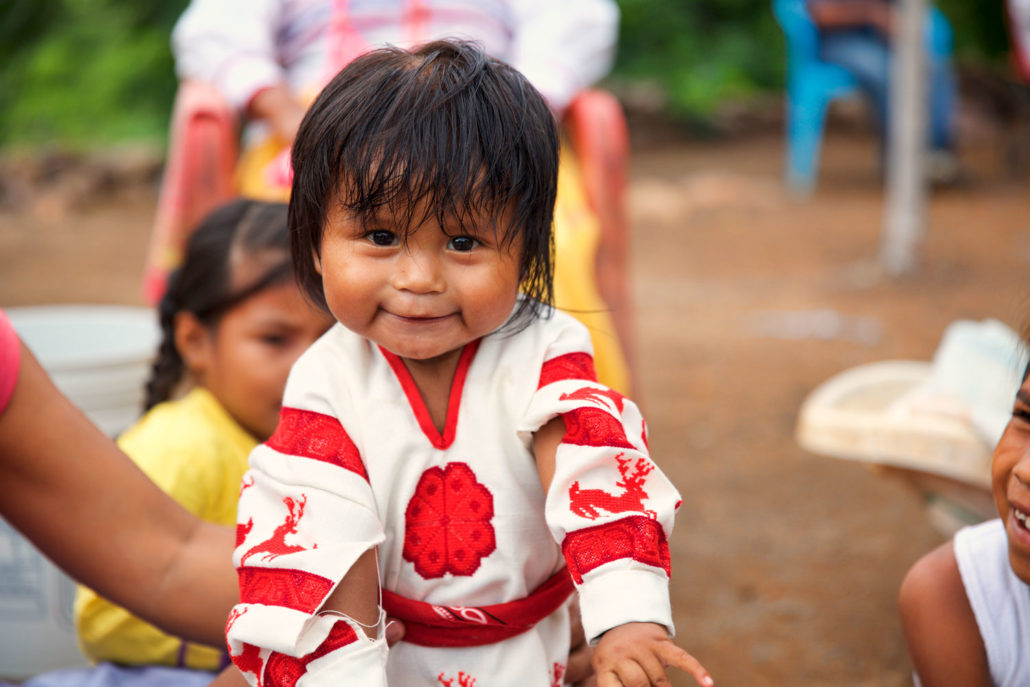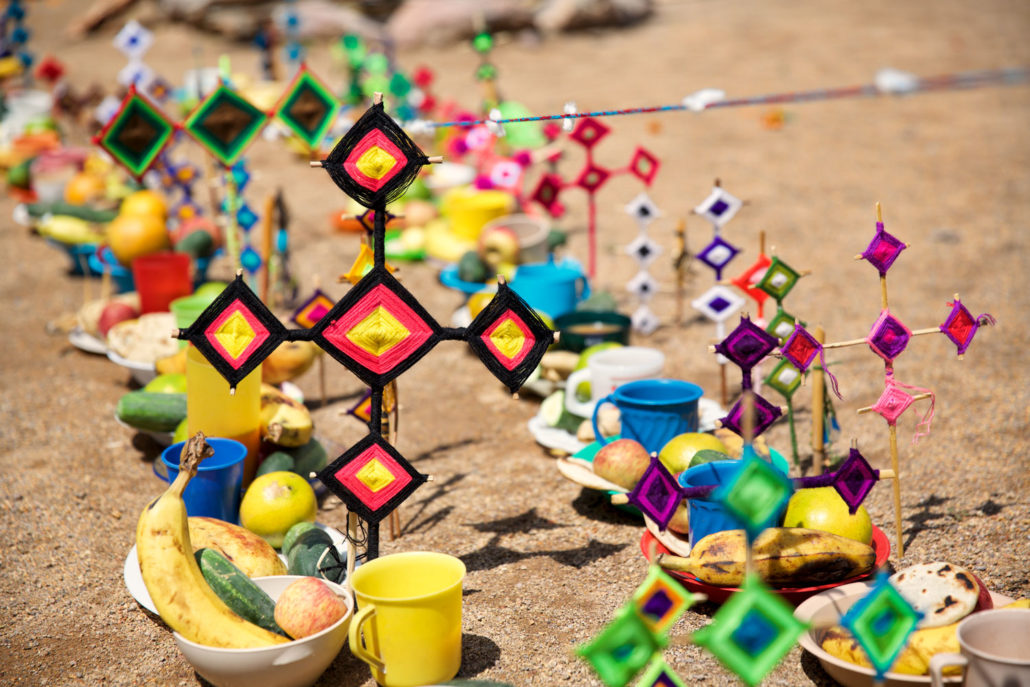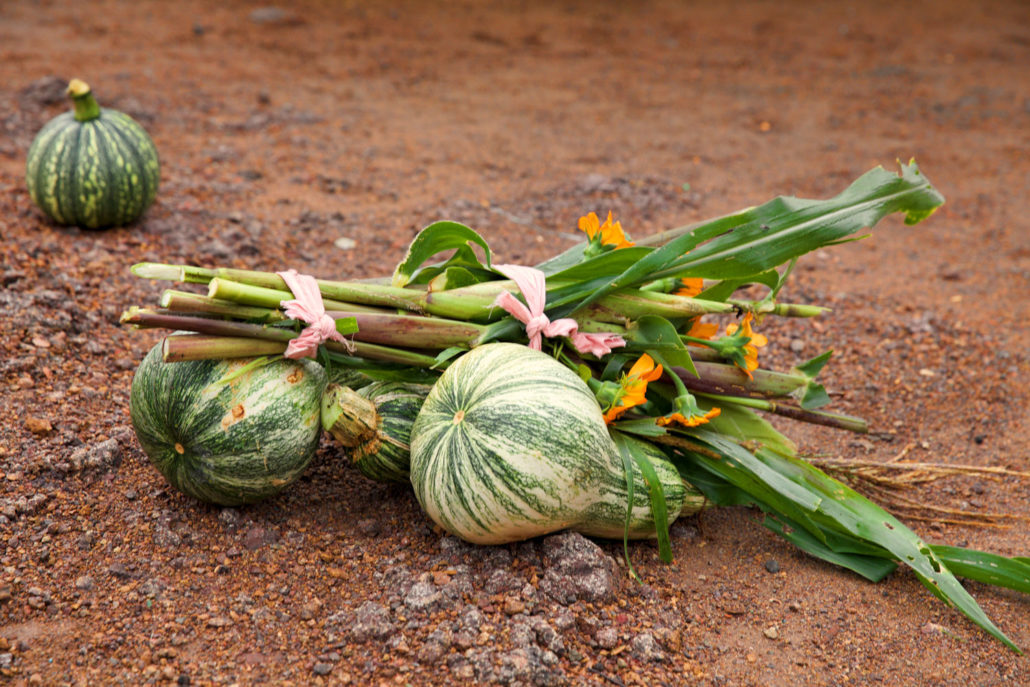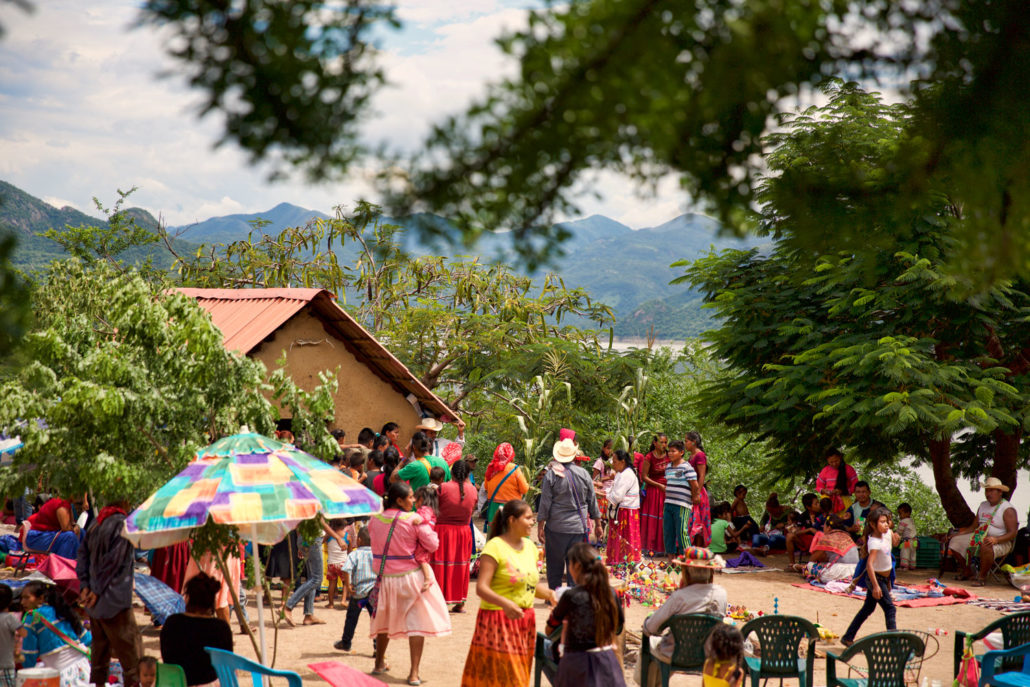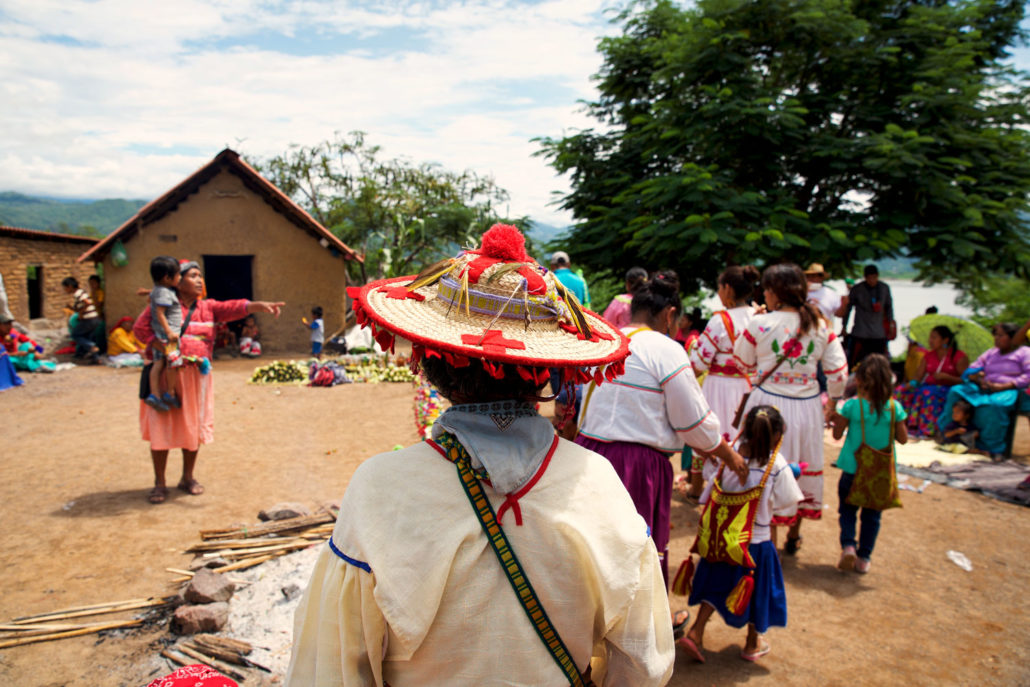Drum & Harvest Ceremony • Autumn 2017
We arrived in the village just before sunset. After eating a light meal of beans and fresh handmade tortillas with salsa, we prepared ourselves for the ceremony. People from various villages had traveled to partake in the harvest ceremony. Elders, men, women, children, and newborn babies all coming together to celebrate, to give thanks, and to pray. Everyone gathered around the fire to offer prayers for a good ceremony. Then the leading elder shaman began to chant quietly, the sound slowly growing as the flames of the fire strengthened.
At one point, a heavy rainstorm had us all taking shelter in huts and under strung-up tarps for a few hours in the middle of the night, as thunder and lightning filled the sky. Once the rain passed, everyone gathered around the fire at the center of the village once again, and the ceremony continued.
At sunrise, an altar was constructed in front of the temple. Corn stalks were tied up, creating a goal post of sorts to set the trajectory of our spirits, as we journeyed to Wirikuta (the Land of the Gods) and Raunasha (The Mountain Where the Sun was Born). Between the goal posts, a god’s eye (Tsikuli) was secured like a target, helping to keep our aim centered and true with the protection of the ancient ones. Then a twisted piece of twine was tied to the god’s eye and stretched tight to an arrow in the earth about 10 meters away. Finally, small balls of cotton were placed along the twine; each one representing a place of power at which we stop during the spiritual journey to Wirikuta.
Once the altar was constructed, freshly picked husks of corn and squash were piled in front of the altar. The mothers laid out dishes with offerings of fresh fruit, blue corn tamales, and small thick tortillas. Beside each plate, arrows with small gods eyes were stuck into the earth. The number of gods eyes on each arrow representing the age of one of the young children in the circle.
As the sun broke free from the clouds and rose higher in the sky, the drumbeat continued to follow the call and return of the shamans’ chanting. The crisp sound of the tree gourd rattles being shaken by children unified the entire circle in focused intention around the dancing flames of the fire. The harmony of the male and female elders singing intricate verses, whispered into their ear by Kauyumari (Elder Brother Deer Spirit), is like the sound of a flowing river, with the stream of chants neither being pulled or pushed, but rather naturally circulating with a clear intention of reaching the ocean of energy within the Nierika (sacred doorway).
With small breaks for folk music and folk dancing, along with time for timeless jokes and laughter, the ceremony continued through the heat of the day. As the sun reached its zenith in the sky, food offerings were shared amongst everyone in the village. Replenished with this fresh nourishment, the chanting and drumming commenced once more as we approached the final stages of the ceremony, in which the shaman summons our spirits back from sky realm, through the Nierika, and into our hearts.
The wind began to wisp up the mountain slopes and through the village, carrying with it a cool breath from the river below. As the refreshing breeze broke through the heat of the day and as the sun starting caressing the lush plateau to the west, the ceremony drew to a close.
Our hearts content and souls empowered with the energy unified from the four directions, the circle slowly dispersed outward to shaded rocks under the carao and calabash trees. The ebb and flow of life in the Huichol village continued as dusk began to wash over the Sierra. With the night settling in, everyone found their place within the village, the fire still burning in the center of it all.
When the flames began to dwindle, someone awoke to add fresh food to the fire. Soon a few of the elders gathered around the fire, and the sound of chuckles gradually grew into laughter as they retold stories from the past and teased one another about things old and new. Eventually, the joy around the fire drew more and more people from the dream world back into the circle.
Eventually, the shaman started to chant, and the drumbeat followed once again. The other shamans chimed in, echoing the songs like sound bouncing through a valley. Then the song changed, indicating it was time to dance. The women and men created two lines, skipping around the fire with the rhythmic beat of the drum. This was the Dance of the Deer.
Honoring the birth of the sun, we danced until the sun burst forth from behind the distant mountain peaks, the golden light warming the village like the smile of a good friend.
Now it was time to bless the freshly harvested corn and squash that had been stacked in front of the altar. Together, all of us – women, children, and men – were given ears of corn and pieces of squash cooked on the fire. One by one, the leading shaman blessed each person and their individual bounty. Once blessed, we offered a small portion of our food to the fire before enjoying it ourselves.
That first bite of crisp corn and soft squash was truly delicious. We had been fasting from corn and squash since the fields were planted in early June, so everyone was especially thankful for this meal.
The shamans gathered for the one final song, to honor Mother Earth and give thanks to the spirits that had joined the ceremony. This marked the close of the ceremony and beginning of another season.
Following the ceremony, the various families gathered together as we dispersed the materials and supplies which we had brought with us on the long journey. With a deep sense of gratitude on both the giving and receiving end, each and every person exchanged positive energy, and through this process, we all became even closer, and even stronger family.
It was time for us to leave, to make the long journey from this home back to another. Before leaving the village, everyone gathered around the fire to make one final prayer to Tatewari (Grandfather Fire). Together we prayed out loud, calling out for ourselves, our loved ones, and all of creation.

